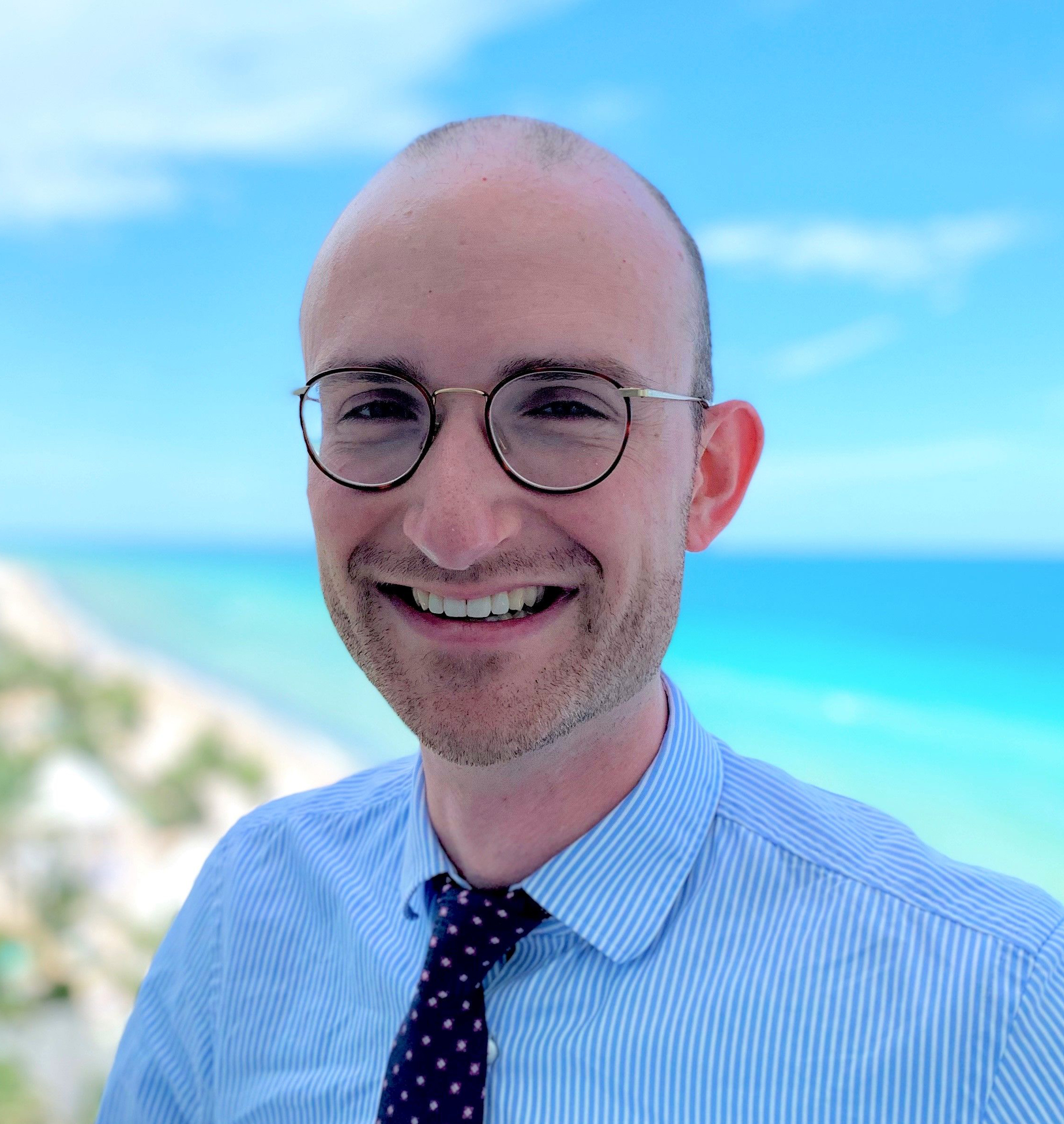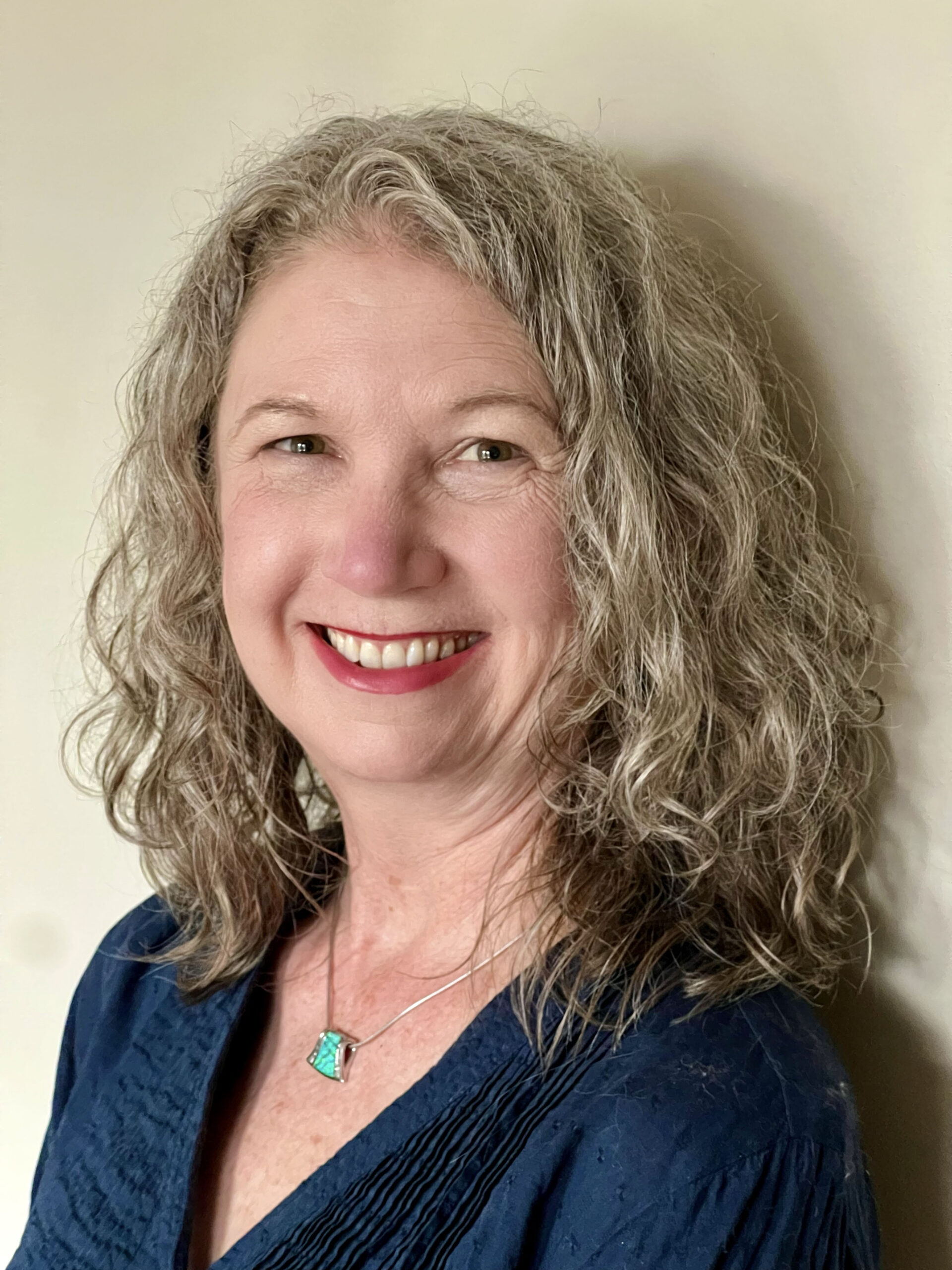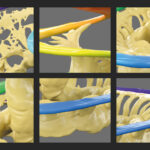
MED-EL
Published Sep 11, 2025
Balance Disorders: Experts Call For Routine Screening
Research related to balance disorders is now rapidly advancing. For many professionals focused primarily on hearing care, it may seem increasingly difficult to stay up to date on vestibular topics. That’s why, as part of Vestibular Awareness Week 2025, we are proud to help get the word out to clinicians and ENT practices around the world.

While it is widely reported that approximately 5.5% of the world’s population has moderate to complete hearing loss,World Health Organization. (2021). World report on hearing. World Health Organization. https://www.who.int/publications/i/item/9789240020481[11] and individuals often wait up to ten years before seeking a hearing assessment, there is evidence that delays may be even longer when it comes to assessing and treating balance disorders.
The Prevalence of Vestibular Dysfunction
Some form of vestibular dysfunction has affected as many as 35% of adults aged 40 years or older in the United States— or approximately 69 million Americans.
Agrawal et al., 2009
The umbrella terms vestibular dysfunction, vestibular hypofunction, vestibulopathy, vestibular hyporeflexia, vestibular loss, vestibular failure, and vestibular deficiency are often used interchangeably to refer to “a heterogeneous disorder of the peripheral and/or rarely central vestibular system leading typically to disabling symptoms such as dizziness, imbalance, and/or oscillopsia.”Starkov, D., Strupp, M., Pleshkov, M., Kingma, H., & van de Berg, R. (2021). Diagnosing vestibular hypofunction: an update. Journal of neurology, 268(1), 377-385. https://www.doi.org/10.1007/s00415-020-10139-4[12] Often missed or misdiagnosed, vestibular deficits may affect up to 95 million adults in Europe and the USA.Starkov, D., Strupp, M., Pleshkov, M., Kingma, H., & van de Berg, R. (2021). Diagnosing vestibular hypofunction: an update. Journal of neurology, 268(1), 377-385. https://www.doi.org/10.1007/s00415-020-10139-4[12] However, it is also important to note that this figure includes the full range of people who experience vestibular hypofunction from severe symptoms that can be disabling to those who are nearly asymptomatic (and may only struggle, for example, when getting out of bed at night and may not mention it to their healthcare providers).
Efforts to move towards standardized definitions and diagnostic criteria in the field are currently underway. One such example that some clinicians and researchers may benefit from is the ICVD Consensus Documents – The Barany Society.
In fact, more than one in two people who fall relatively often have vestibular dysfunction, and it is recommended that vestibular screening should be incorporated into a comprehensive fall assessment.Donovan, J., De Silva, L., Cox, H., Palmer, G., & Semciw, A. I. (2023). Vestibular dysfunction in people who fall: a systematic review and meta-analysis of prevalence and associated factors. Clinical rehabilitation, 37(9), 1229-1247. https://doi.org/10.1177/02692155231162423[3] In addition, many people with vestibular dysfunction face major challenges when completing basic everyday tasks related to work, school, and in their free time. Vestibular testing in children is an interesting and developing field and a recent meta-analysis suggests quite high rates of deficit prevalence.Saniasiaya, J., Islam, M. A., & Salim, R. (2023). The global prevalence of vestibular dysfunction in children and adolescents: a systematic review and meta-analysis. European Archives of Oto-Rhino-Laryngology, 280(6), 2663-2674. https://doi.org/10.1007/s00405-023-07842-z[8]
In some well-known conditions such as Meniere’s disease, patients can experience a severe and sudden fluctuation in vestibular function resulting in a fall or prolonged debilitating vertigo for a period of hours. Some other conditions develop progressively over time (such as certain genetic conditions) resulting in a slow loss of vestibular function, whilst others such as those caused by trauma or infection can result in an instant loss.
The most debilitating chronic form of vestibular dysfunction is bilateral vestibulopathy (BVP), which is severe, and affects approximately 28 out of 100,000 U.S. adults.
Ward et al., 2013
When rehabilitation programs are not effective for these individuals, bilateral vestibulopathy can be disabling. People with bilateral vestibulopathy have effectively lost vestibular function permanently in both ears and often report chronic symptoms of imbalance and blurred vision (oscillopsia). They may become dependent on others and either significantly reduce or even entirely stop working and attending social activities.Van Rompaey, V., Moyaert, J., Van de Heyning, P., Dobbels, B., Van de Berg, R., Guinand, N., ... & Mertens, G. (2025). The impact of bilateral vestibulopathy on quality of life: data from the Antwerp University Hospital registry. European Archives of Oto-Rhino-Laryngology, 1-9.[13] They may experience difficulties multitasking or completing cognitive tasks, along with significant emotional distress and a substantially reduced quality of life.Guinand, N, Boselie, F, Guyot, JP, and Kingma, H. Quality of life of patients with bilateral vestibulopathy. Ann Otol Rhinol Laryngol. (2012) 121:471–7. https://www.doi.org/10.1177/000348941212100708[4]Miffon, M., & Guyot, J. P. (2015). Difficulties faced by patients suffering from total bilateral vestibular loss. Orl, 77(4), 241-247. https://doi.org/10.1159/000433553[6]
Hearing Loss: A Harbinger of Vestibular Loss
Hearing loss is often a warning sign that there may also be vestibular loss. Recent studies suggest that severe-to-profound hearing loss is likely to be found in at least one ear in more than 30% of patients with bilateral vestibulopathy.Moyaert, J., Dobbels, B., Peetermans, O., Boon, B., Lucieer, F., Guinand, N., ... & Van Rompaey, V. (2023). Etiologies and hearing status in bilateral vestibulopathy: a retrospective study of 315 patients. Frontiers in Neurology, 14, 1271012. https://www.doi.org/10.3389/fneur.2023.1271012[7]
Among patients presenting for cochlear implantation, the incidence of significant bilateral vestibular dysfunction is estimated to be 3-5% for adults and more than 20% of children.Cushing, S. L., Gordon, K. A., Rutka, J. A., James, A. L., & Papsin, B. C. (2013). Vestibular end-organ dysfunction in children with sensorineural hearing loss and cochlear implants: an expanded cohort and etiologic assessment. Otology & Neurotology, 34(3), 422-428. https://www.doi.org/10.1097/MAO.0b013e31827b4ba0[2]Wiener-Vacher, S. R., Quarez, J., & Le Priol, A. (2018, August). Epidemiology of vestibular impairments in a pediatric population. In Seminars in hearing (Vol. 39, No. 03, pp. 229-242). Thieme Medical Publishers. https://www.doi.org/10.1055/s-0038-1666815[10]
Less severe types of vestibular hypofunction are even more common. As a result, some experts are advocating a quick, cheap, and easy method of performing a vestibular screening for all patients when testing for hearing loss—the vHIT.

“The vHIT is a primary test to screen for vestibular deficits, particularly among people with hearing impairments and the elderly, among whom the prevalence of vestibular deficits is high.”
PD Dr. Nils Guinand, PhD
ENT Surgeon specializing in neurotology and vestibular disorders at the University Hospital of Geneva, Switzerland
A Recap of the Vestibulo-Ocular Reflex: A Window to Vestibular Function
One key function of the vestibular organ is to elicit a response via the Vestibulo-Ocular Reflex (VOR). When the vestibular system senses head motion, this reflex causes eyes to move in the opposite direction to compensate for the motion, stabilizing gaze and maintaining focus on the target. This mechanism operates across a wide range of head rotation (shaking or movement), with frequencies from 0.001 Hz up to 50Hz (angular accelerations). If the Vestibulo-Ocular Reflex is impaired, dizziness, imbalance, or blurred vision may occur when patients move their heads.
Vestibular Screening for Balance Disorders & Balance Deficits
The most commonly used objective test for vestibular diagnosis is currently the caloric test (irrigation of the outer ear canal with warm or cold water or air to elicit a vestibular response). However, this is only effective for testing the lateral semicircular canal and lower frequency function of the vestibular system. Similarly, rotary chair testing is limited to only mid-frequencies.
vHIT: Quick & Cost-Effective Vestibular Disorder Screening

"The most important message to the ENT field would be to urge clinicians to perform vHITS on their patients who present with hearing loss. vHITs are relatively simple and fast and can detect severe unilateral and bilateral vestibular hypofunction."
Prof. Dr. Dr. Raymond van de Berg
ENT Surgeon & Professor specializing in vestibular disorders at Maastricht University Medical Center
The video head impulse test (vHIT) assesses the VOR in the higher frequency region of vestibular function for all three canals. To perform a vHIT, a clinician asks the patient to focus their eyes on a target while their head is put through a series of quick rotations in the plane of each semi-circular canal. While doing so, a high-speed camera is used to track the patient’s eye movements. If a patient’s vestibular system is not able to sense the rotation, their eyes will not remain focused on the target. After a short delay, once their brain realizes the shift in the image, the patient then refocuses on the non-moving target object by performing slower, corrective saccades to bring the eyes back on target.
The Advantages of Performing vHIT Testing
- High-frequency function of all six semicircular canals is tested
- Severe unilateral or bilateral vestibular hypofunction can be detected
- Only 10-15 minutes are needed on average, which is faster than caloric testing
- The vHIT can help to determine whether etiology is of peripheral origin
- The vHIT is more reliable and easier to perform than caloric testing
- The vHIT is generally well-tolerated by adult and pediatric patients while caloric testing is known to cause dizziness
Overt & Covert Saccades
Refocusing after the rotation stops is known as a corrective saccade. When visible to the naked eye it is an “overt” saccade, and thus is detectable in the traditional manual bedside test (commonly known as either the head impulse test (HIT) or head thrust test (HTT) without the aid of a high-speed video camera or vHIT goggles.
However, “covert” saccade eye movements can also occur when some patients learn to initiate the saccades during head movements. These usually happen so quickly that they are not visible to the naked eye but can be detected with video nystagmography when performing a vHIT.
What Your Clinic Needs for vHIT Testing

“With vHIT, an enhancement of your clinic's diagnostic performance in vestibular medicine is within reach.”
PD Dr. Nils Guinand, PhD
ENT Surgeon specializing in neurotology and vestibular disorders at the University Hospital of Geneva, Switzerland
A simple, manual form of the vHIT, easily carried out in the horizontal plane, simply needs training. With experience, all canals can be evaluated in this way. Automated and accurate assessments of VOR gain can also benefit from the use of a goggles-based system, available from a number of equipment providers.
vHIT Training Courses
Training is available either by attending a training course in person or online. Follow the links below to find out when the next available training opportunities take place from the providers listed.
VeDA: Resources For You & Your Patients

“Many hearing health professionals encounter patients struggling with unexplained dizziness, vertigo, or imbalance that are often symptoms of a vestibular disorder.”
Cynthia Ryan, MBA
Executive Director of VeDA
VeDA, the Vestibular Disorders Association, provides evidence-based resources, patient education materials, access to professional training opportunities, and a healthcare provider directory to help audiologists, ENTs, and other hearing health specialists recognize and treat these often-overlooked conditions.
Hearing health professionals can visit vestibular.org to access over 130 peer-reviewed articles on vestibular diagnosis, treatment, and coping strategies. For deeper engagement, providers are encouraged to join VeDA as professional members, gaining access to a list of continuing education opportunities, referral listings in VeDA’s popular online directory, and cobranded patient education materials.

“Each September, VeDA hosts Balance Awareness Week, a global campaign designed to raise awareness of balance disorders, including those with inner ear causes and those with central nervous system causes. The VEDA community would be delighted if you and your clinic would join us.”
Cynthia Ryan, MBA
Executive Director of VeDA
For patients, Balance Awareness Week (September 14-20, 2025) is an opportunity to find connection and validation, while advocating for improvements in vestibular healthcare. Many people with vestibular disorders feel isolated or misunderstood. VeDA’s support groups and online forum help individuals connect with others who share their experiences and journeys. Patients can also read educational articles, watch webinars, and explore coping tips on VeDA’s website to gain a better understanding of their condition.

“Whether you’re a healthcare provider or a patient, Balance Awareness Week is a powerful reminder: you’re not alone, and help is available.”
Cynthia Ryan, MBA
Executive Director of VeDA
Join VeDA in building a community of support for patients, supporting critical research, and improving balance and hearing health worldwide. Visit vestibular.org/BAW to learn how you can make a difference.

MED-EL would like to thank the following professionals for their contributions to this article:
- Dr. Dr. Raymond van de Berg, ENT surgeon & professor of vestibular disorders at the Maastricht University Medical Center where he is also Head of the Department of Audiology, the Vestibular Laboratory, and of the Department of Otorhinolaryngology and Head & Neck Surgery.
- PD Dr. Nils Guinand, PhD, an ENT Surgeon specializing in neurotology and vestibular disorders at the University Hospital of Geneva, Switzerland.
- Cynthia Ryan, MBA, VeDA’s Executive Director, an advocate for vestibular awareness in honor of her mother who struggles with hearing loss and tinnitus due to Meniere’s Disease.
References
-
[1]
Agrawal, Y., Carey, J. P., Della Santina, C. C., Schubert, M. C., & Minor, L. B. (2009). Disorders of balance and vestibular function in US adults: data from the National Health and Nutrition Examination Survey, 2001-2004. Archives of internal medicine, 169(10), 938-944. doi:10.1001/archinternmed.2009.66
-
[2]
Cushing, S. L., Gordon, K. A., Rutka, J. A., James, A. L., & Papsin, B. C. (2013). Vestibular end-organ dysfunction in children with sensorineural hearing loss and cochlear implants: an expanded cohort and etiologic assessment. Otology & Neurotology, 34(3), 422-428. https://www.doi.org/10.1097/MAO.0b013e31827b4ba0
-
[3]
Donovan, J., De Silva, L., Cox, H., Palmer, G., & Semciw, A. I. (2023). Vestibular dysfunction in people who fall: a systematic review and meta-analysis of prevalence and associated factors. Clinical rehabilitation, 37(9), 1229-1247. https://doi.org/10.1177/02692155231162423
-
[4]
Guinand, N, Boselie, F, Guyot, JP, and Kingma, H. Quality of life of patients with bilateral vestibulopathy. Ann Otol Rhinol Laryngol. (2012) 121:471–7. https://www.doi.org/10.1177/000348941212100708
-
[5]
Janky, K. L., Patterson, J., Shepard, N., Thomas, M., Barin, K., Creutz, T., Schmid, K., & Honaker, J. A. (2018). Video Head Impulse Test (vHIT): The Role of Corrective Saccades in Identifying Patients With Vestibular Loss. Otology & neurotology : official publication of the American Otological Society, American Neurotology Society and European Academy of Otology and Neurotology, 39(4), 467–473. https://www.doi.org/10.1097/MAO.0000000000001751
-
[6]
Miffon, M., & Guyot, J. P. (2015). Difficulties faced by patients suffering from total bilateral vestibular loss. Orl, 77(4), 241-247. https://doi.org/10.1159/000433553
-
[7]
Moyaert, J., Dobbels, B., Peetermans, O., Boon, B., Lucieer, F., Guinand, N., … & Van Rompaey, V. (2023). Etiologies and hearing status in bilateral vestibulopathy: a retrospective study of 315 patients. Frontiers in Neurology, 14, 1271012. https://www.doi.org/10.3389/fneur.2023.1271012
-
[8]
Saniasiaya, J., Islam, M. A., & Salim, R. (2023). The global prevalence of vestibular dysfunction in children and adolescents: a systematic review and meta-analysis. European Archives of Oto-Rhino-Laryngology, 280(6), 2663-2674. https://doi.org/10.1007/s00405-023-07842-z
-
[9]
Ward, B. K., Agrawal, Y., Hoffman, H. J., Carey, J. P., & Della Santina, C. C. (2013). Prevalence and impact of bilateral vestibular hypofunction: results from the 2008 US National Health Interview Survey. JAMA otolaryngology–head & neck surgery, 139(8). https://www.doi.org/doi:10.1001/jamaoto.2013.3913
-
[10]
Wiener-Vacher, S. R., Quarez, J., & Le Priol, A. (2018, August). Epidemiology of vestibular impairments in a pediatric population. In Seminars in hearing (Vol. 39, No. 03, pp. 229-242). Thieme Medical Publishers. https://www.doi.org/10.1055/s-0038-1666815
-
[11]
World Health Organization. (2021). World report on hearing. World Health Organization. https://www.who.int/publications/i/item/9789240020481
-
[12]
Starkov, D., Strupp, M., Pleshkov, M., Kingma, H., & van de Berg, R. (2021). Diagnosing vestibular hypofunction: an update. Journal of neurology, 268(1), 377-385. https://www.doi.org/10.1007/s00415-020-10139-4
-
[13]
Van Rompaey, V., Moyaert, J., Van de Heyning, P., Dobbels, B., Van de Berg, R., Guinand, N., … & Mertens, G. (2025). The impact of bilateral vestibulopathy on quality of life: data from the Antwerp University Hospital registry. European Archives of Oto-Rhino-Laryngology, 1-9.
References

MED-EL
Was this article helpful?
Thanks for your feedback.
Sign up for newsletter below for more.
Thanks for your feedback.
Please leave your message below.
CTA Form Success Message
Send us a message
Field is required
John Doe
Field is required
name@mail.com
Field is required
What do you think?
The content on this website is for general informational purposes only and should not be taken as medical advice. Please contact your doctor or hearing specialist to learn what type of hearing solution is suitable for your specific needs. Not all products, features, or indications shown are approved in all countries.

MED-EL

MED-EL



